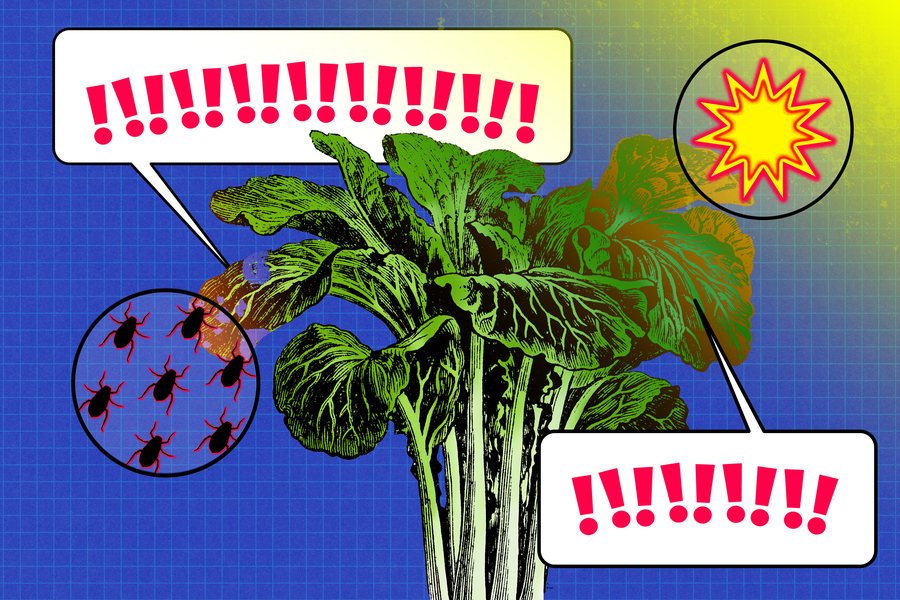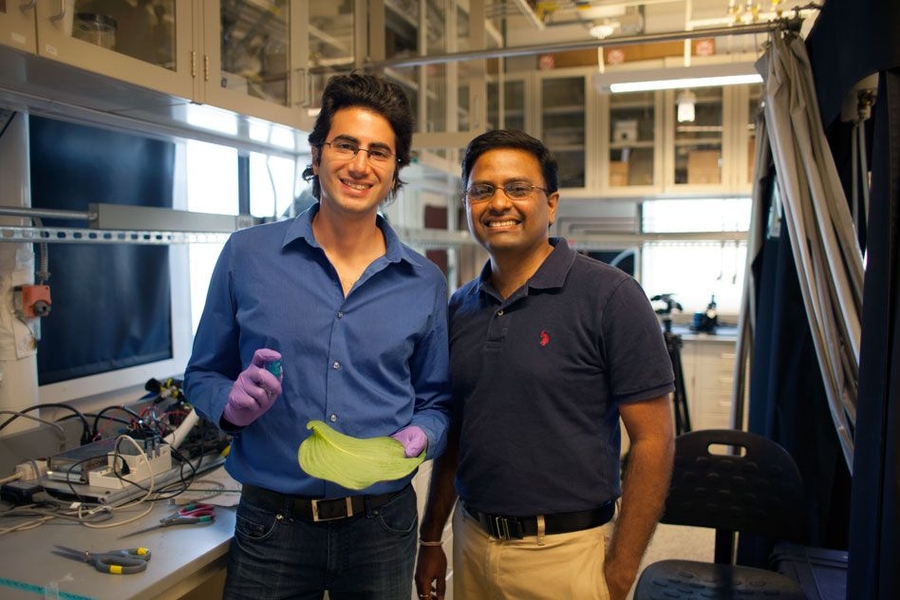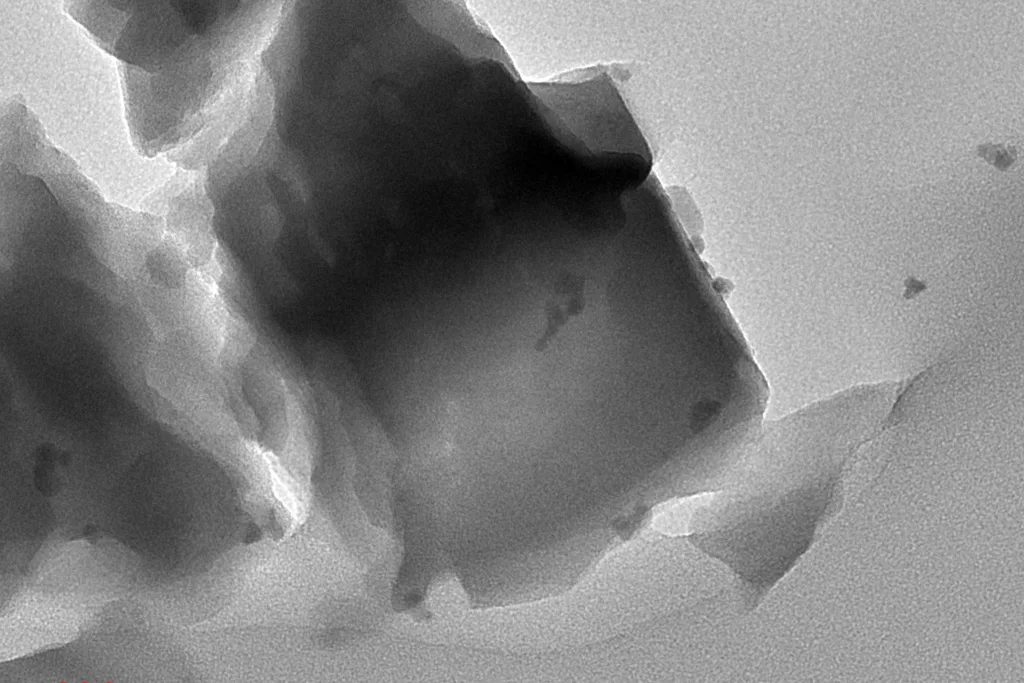With the planet’s temperature on the rise, it’s crucial for agricultural practices to evolve. Increasingly frequent droughts may render some land unfit for farming. Coupled with the challenge of feeding a rapidly growing global population, there is an urgent need to minimize the usage of fertilizers and agrochemicals, whose considerable carbon footprints contribute to global warming.
At MIT, researchers are addressing these pressing agricultural challenges through innovative approaches that range from engineering plants capable of signaling distress to enhancing seed resilience under drought conditions. Such pioneering technologies are critical for ensuring food security in a changing climate.
“Beneath all needs, food comes second only to water,” emphasizes Benedetto Marelli, an associate professor in civil and environmental engineering at MIT. “To sustain a future population of 10 billion, we must devise new methods for food production.”
Marelli leads one of the six missions within the newly established Climate Project at MIT, which focuses on diverse research areas that include decarbonizing industry and developing resilient urban environments. He heads the Wild Cards mission, which seeks unconventional, high-risk, high-reward solutions.
Marelli asserts that MIT’s multidisciplinary strengths span engineering, biological sciences, economics, and humanities, positioning the institution to tackle the immense challenges of climate change. “Collaboration across diverse fields creates significant opportunities for solutions,” he notes.
Enhancing Seed Resistance to Drought
Marelli’s journey began in biomedical engineering focused on regenerative medicine. He now aims to increase crop yields by developing seed coatings that help seeds endure and germinate even in drought-stricken or nutrient-depleted soils. Using silk and other polymers, his seed coatings nourish seeds during critical germination, ensuring they retain available water.
Healthy soil provides essential nutrients like nitrogen and phosphates, often supplied by beneficial soil microbes. Unfortunately, drought and over-farming can lead to nutrient depletion. To combat this, Marelli’s seed coatings incorporate plant-growth-promoting bacteria that “fix” nitrogen from the air, making it accessible to crops. This method ensures that seeds can thrive in challenging conditions.
In collaboration with researchers from Mohammed VI Polytechnic University in Morocco, Marelli is customizing these seed coatings for crops native to the region, which has endured six successive drought years due to climate change. Adapting the process, the team now utilizes a biopolymer coating derived from local food waste, ensuring suitability for the Moroccan environment.
Microbial Fertilizer Solutions
Crops typically thrive with synthetic fertilizers, which, while essential, are costly and environmentally damaging. The conventional Haber-Bosch process for producing ammonia contributes roughly 1.5% of global greenhouse gas emissions, not to mention the additional emissions during transportation.
Ariel Furst, an assistant professor of chemical engineering at MIT, is pioneering a microbial alternative to this energy-intensive method. While directly applying nitrogen-fixing bacteria to crops has shown promise, these microbes are delicate and challenging to store and transport. They often must be cultivated on-site in bioreactors.
To enhance the viability of these microbes, Furst develops a protective coating composed of a metal and a plant-derived polyphenol. The coating not only shields the bacteria from heat and other stressors but also allows them to survive freeze-drying for easier transport.
“These microbes will accompany seeds, eliminating the need for mid-growth fertilization,” Furst explains. “This approach promotes more sustainable agriculture by enhancing soil health and crop yields, all while reducing carbon emissions.” Her venture, Seia Bio, is commercializing these coated microbes and has begun trials on Brazilian farms, while also adapting the technology to capture atmospheric CO2 for soil improvement.
Real-Time Plant Distress Sensors
Michael Strano, the Carbon P. Dubbs Professor of Chemical Engineering at MIT, has explored creating plants equipped with sensors to signal stress. Plants react to drought, pests, or other stressors by releasing specific hormones and signaling molecules.
By utilizing the unique properties of single-walled carbon nanotubes, Strano and his team developed tiny sensors that can detect these distress signals when embedded in plant leaves. These special sensors emit fluorescent signals in response to various stressors.

This groundbreaking technology enables real-time data collection on plant health, allowing farmers to make timely, informed decisions to increase yields. “We aim to equip farmers with crucial information quickly enough that they can adapt their strategies,” Strano explains. Such sensing tools are versatile for both open-field and controlled environment farming.
Much of this research has been supported by the U.S. Department of Agriculture (USDA) under the Disruptive and Sustainable Technologies for Agricultural Precision (DiSTAP) program in partnership with the Singapore-MIT Alliance for Research and Technology (SMART).
Minimizing Pesticide Usage
Pesticides present a significant cost—about $60 billion annually. Unfortunately, excessive pesticide use can negatively impact water and soil health, posing risks to both the ecosystem and human health. Yet, without pesticides, crop loss can exceed 50%.
Kripa Varanasi, an MIT professor of mechanical engineering, is developing tools to help farmers optimize pesticide application. Inspired by interactions between liquid droplets and surfaces, Varanasi aims to enhance how pesticides adhere to plants, reducing environmental runoff.
His research has revealed that adding charged polymers to pesticides improved adherence, allowing droplets to stick rather than bounce off leaves. More recently, Varanasi and graduate student Vishnu Jayaprakash co-founded AgZen to commercialize these innovations, creating a product named EnhanceCoverage designed to maximize pesticide efficiency.

They also developed RealCoverage, a machine vision product that can measure how many pesticide droplets remain on plants, actively used on farms across the U.S. in 2024. Using this technology, farmers achieved reductions of 30-50% in pesticide usage. The EnhanceCoverage product is anticipated to further enhance these benefits when launched in 2025.
“Our goal is to equip farmers with tools that save money while improving yields and minimizing environmental impacts,” Varanasi expresses. “This embodies MIT’s mission—to identify genuine issues and develop effective solutions to benefit all.”
Photo credit & article inspired by: Massachusetts Institute of Technology



